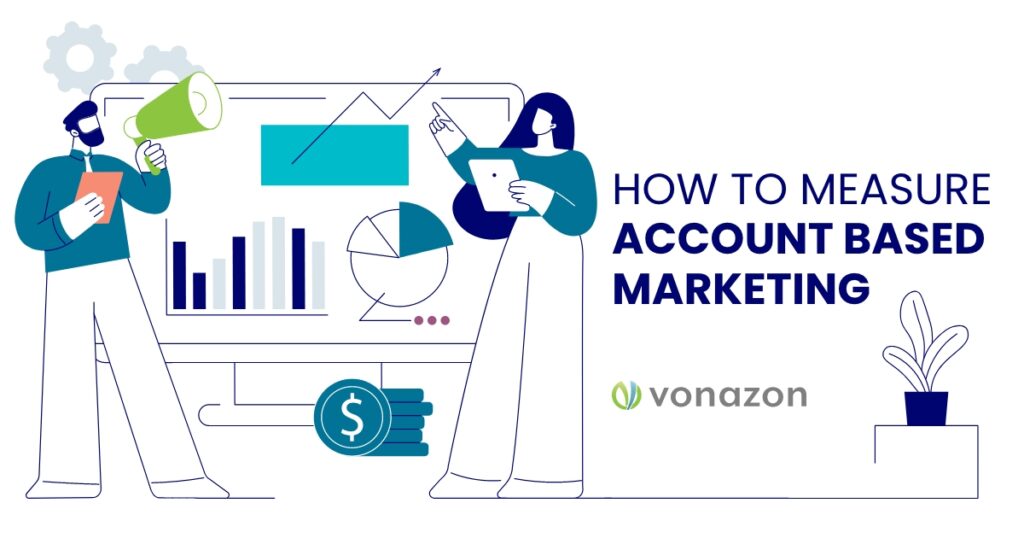How to Measure Account Based Marketing
Account Based Marketing (ABM) is continuing to establish itself as a potent tool for companies looking to target high-value accounts and drive meaningful revenue growth. However, the effectiveness of ABM largely hinges on accurate measurement and analysis. Without proper metrics in place, it’s challenging to gauge the impact of ABM efforts and optimize strategies for success. In this guide, we’ll delve into the intricacies of how to measure account based marketing and provide actionable insights to help unlock its full potential.
What Is Account-Based Marketing (ABM)
Before diving into measurement techniques, let’s discuss exactly what account based marketing is. Unlike traditional lead-based approaches, ABM focuses on targeting specific accounts or organizations identified to be most valuable to your business. By aligning sales and marketing efforts, ABM aims to deliver personalized experiences tailored to the unique needs and challenges of each target account. This strategic approach creates deeper relationships, accelerates sales cycles, and ultimately drives higher ROI.
Defining Key Metrics and KPIs
Measuring the success of account based marketing requires a clear understanding of important metrics and Key Performance Indicators (KPIs) centered around your objectives. While traditional marketing metrics like lead volume and website traffic are valuable, ABM demands a more account-centric approach. Here are some essential metrics to consider:

Account Engagement:
Monitor the level of engagement from target accounts across various channels, including website visits, email interactions, and social media engagement. Tools like CRM systems and marketing automation platforms can provide valuable insights into account-level activity.

Opportunity Influence:
Assessing the impact of account based marketing on pipeline generation and deal velocity by tracking the number of opportunities influenced helps measure how significant your ABM efforts are to overall revenue generation and sales acceleration.

Account Growth:
Analyze factors such as upsell/cross-sell opportunities, account penetration, and customer lifetime value to evaluate the effectiveness of account based marketing in driving account growth.

Revenue Attribution:
By accurately attributing revenue to ABM efforts marketers can demonstrate the direct impact of their initiatives on the bottom line.
Leveraging Technology and Data Analytics
Leveraging advanced analytics tools and insights enables marketers to track, analyze, and optimize ABM campaigns with the highest level of accuracy. Here are some essential tools and techniques:

CRM Integration:
Integrate your Customer Relationship Management (CRM) system with your ABM platform to centralize account data and track interactions throughout the customer journey. This integration provides a holistic view of account engagement and helps facilitate seamless collaboration between sales and marketing teams.

Marketing Automation:
Utilize marketing automation platforms such as HubSpot and Salesforce to automate personalized communications and track engagement with target accounts at scale. Automated workflows can also streamline the ABM process by delivering tailored content, nurturing leads, and triggering alerts based on account behavior.

Predictive Analytics:
By analyzing historical data and behavioral patterns, predictive models can pinpoint accounts most likely to convert and guide their strategic decision-making.

Account-Based Reporting:
Develop custom reports and dashboards to track ABM performance metrics and monitor progress towards key objectives. These reports provide actionable insights into campaign effectiveness, allowing marketers to make data-driven decisions and optimize strategies in real-time.
Iterating and Optimizing ABM Strategies
By analyzing performance data and gathering feedback from sales teams, marketers can identify areas for improvement and refine their strategies over time. Here are some strategies for ongoing optimization:

A/B Testing:
Experiment with different messaging, content, and targeting criteria to identify the most effective approaches for engaging target accounts. A/B testing allows marketers to refine their messaging and optimize campaign performance based on empirical data.

Sales and Marketing Alignment:
Prioritize collaboration and communication between sales and marketing teams to ensure alignment on account priorities, messaging strategies, and campaign execution. Regular meetings and shared metrics promote transparency and accountability across departments while maximizing efficiency.

Feedback Loops:
Collect feedback from sales teams and target accounts to gain insights into campaign effectiveness and identify areas for improvement. Incorporate feedback into future campaigns to enhance relevance and impact.

Iterative Learning:
Embrace a culture of iterative learning and experimentation, where marketers continuously test new ideas, measure results, and adapt strategies based on insights gained.
When To Track Specific Account Based Marketing KPIs
Gathering KPI data at the right time can be just as important as collecting the data in the first place. To best exemplify this, let’s use the “Customer Journey as a Love Language” analogy that our CEO, Kevin England, presented at HubSpot INBOUND Conference in Boston of 2023. Kevin’s brilliant comparison between an effective ABM customer journey and the stages of developing your love language in a relationship does an exceptional job of helping understand which KPIs to track at key moments. Let’s break it down.
Phase 1:
This is the brand awareness phase, which is akin to the initial online dating phase. This is a trial and error phase where you start to learn about and focus on your target accounts.
KPIs to Track During Phase 1: Content and messaging performance.
- Number of engaged accounts
- Number of page views influenced
- Percentage of web traffic increase
Phase 2:
This phase is when you’re transitioning from online dating to in person and forming an actual meaningful connection. With account based marketing, you are identifying opportunities to build and nurture your relationship with the customer.
KPI to Track During Phase 2: Pipeline generation from target accounts.
- Number of opportunities created
- Value of pipeline creation
- Average value of opportunity
- Opportunity conversion rate.
Phase 3:
This is the pipeline acceleration phase, which can be compared to a committed relationship. You’re connecting on a deep level, and it is now your responsibility to show up to ensure the relationship thrives. It’s your responsibility to deliver an enjoyable and supportive experience.
KPI to Track During Phase 3: Revenue generation in target accounts.
- Number of opportunities closed
- Revenue generation
- Win rate percentage
- Opportunity stage conversion rate
Phase 4:
This phase revolves around customer retention. In a relationship, this would be the time to take things to the next level and put a ring on it. Your focus is continuous improvement, which is accomplished by listening to feedback, analyzing data, and staying in tune with evolving customer needs.
KPI to Track During Phase 4: Compare topic interest.
- Amount of revenue won
- Retention rate percentage
- Relation score
Phase 5:
The final phase is customer expansion, which means it’s time to expand the relationship and start a family! By focusing on customer expansion, you will not only increase customer lifetime value but also foster loyalty, build stronger relationships, and create brand advocates who can bring in new customers through positive word-of-mouth.
KPI to Track During Phase 5: Expansion insights.
- Expansion pipeline revenue
- Number of expansions opportunities
- Expansion revenue amount per account
- Number of accounts engaged
Finding Success by Measuring Account Based Marketing Effectively
Measuring account based marketing requires a strategic approach, leveraging the right metrics, technology, and analytics tools. By defining clear objectives, tracking relevant KPIs at the right time, and continuously iterating and optimizing strategies, marketers can unlock the full potential of ABM and drive meaningful business outcomes. By embracing a data-driven mindset and fostering collaboration between sales and marketing teams, organizations can position themselves for success in an increasingly competitive landscape. With the right tools and techniques in place, measuring ABM becomes not only achievable but essential for driving sustainable growth and maximizing ROI.
At Vonazon, we have set ourselves apart as leaders in the world of account based marketing strategies. Our expert team is not only exceptional at measuring account based marketing, but also executing brilliant strategies that deliver relevant, high-quality quality content to high value leads, working to covert them into loyal customers. Contact us to begin your ABM journey with a partner that will help you find success every step of the way.






